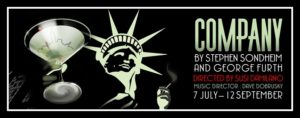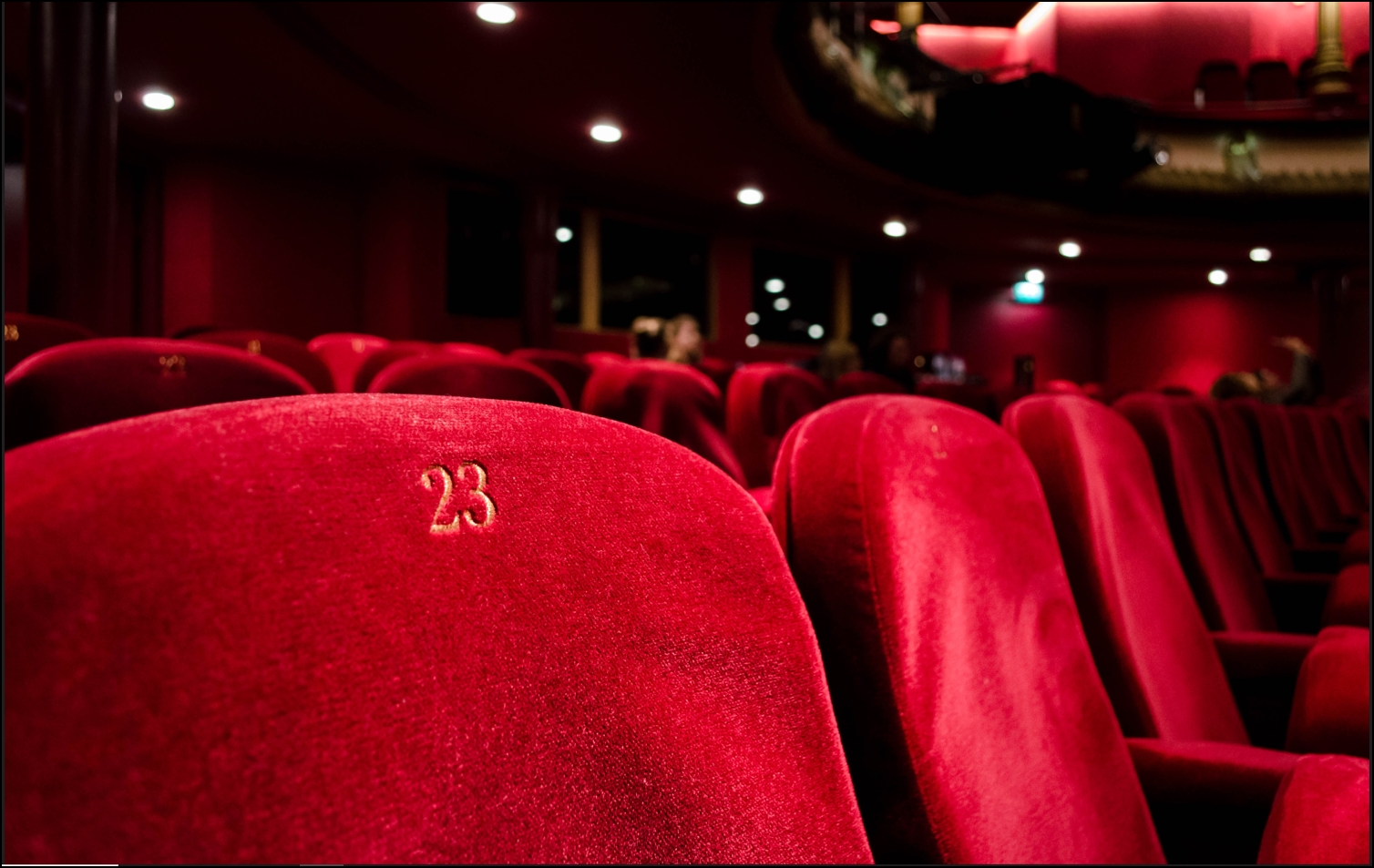 NOTE: The following commentary is focused primarily on the production, direction, and technical aspects of theater and performing arts.
NOTE: The following commentary is focused primarily on the production, direction, and technical aspects of theater and performing arts.
SF Playhouse has learned a secret uncovered by few community and regional theaters: big musicals in the June 1 to Sept. 1 timeframe can make serious money. Especially in tourist destination cities or areas.
Raising a vodka gimlet to toast their own obvious success with this secret (as witnessed by the near sell-out audience last Saturday night), SF Playhouse’s production of Company, by Stephen Sondheim and George Furth, went down as smooth as a cocktail and left many patrons with a satisfied glow as a result.
Company is not your typical all-singing-all-dancing musical. In fact, there’s little enough dancing in the show—this is a musical with the emphasis on the music and the singing.Company is not a sort of A-to-Z straight-line plot, either. The show is composed of a variety of scenes that taken as a whole tell our tale.
The scenes/music/singing all revolve around the dating/marriage/commitment/relationships of one newly 35-year-old man named Bobby, played with almost detached studied aplomb by Keith Pinto. A perpetual bachelor and bon vivant, Bobby, and his married friends, are celebrating his birthday; that, in essence, is the storyline.
TECHNICAL SCORECARD
Scenic Design:
The set design by Bill English and Jacquelyn Scott is elegant on many levels because the set is built on, you guessed it, many levels. The scenic rear projections as designed by Micah Stieglitz add a powerful theatrical touch to the proceedings. (Score: 8/10)
Set Construction:
In a word: quality. A well constructed, well thought-out set. No extraneous architecture—nothing that didn’t need to be there was there. (Score: 8/10)
Stage Management:
As rendered by Tatjana Genser, the stage management was tight with sound and light cues snappily in place. (Score: 8/10)
Sound:
The sound design by Anton Hedman works well. (Score: 7/10)
Props:
The props design is fine—what props need to be in place are in place, work well, and underscore scenes nicely. (Score: 7/10)
Costumes:
Costume design by Shannon Sigman takes full marks—elegant, well designed, and nicely rendered. All the actors looked darn good in Sigman’s work. (Score: 8/10)
Direction:
As directed by SF Playhouse co-founder Susi Damilano, Company is well blocked with excellent stage pictures rendered on the multiple layers of the stage. This adds complexity to the directorial process because it’s easier to watch/direct actors at the same time on a single level plane versus actors scattered liberally from stage left to stage right and upstage to downstage.
Blocking takes on aspects of choreography in many plays (both musical and non-musical), and Damilano handled movement well. My only nudge would be that cue pick-ups could be quicker, brisker, and the same nudge for scene transitions—a bit faster might have added even more audience energy to the proceedings. (Score: 8/10)
Musical Direction:
Company eschews the full orchestration and electric guitars of most productions, relying instead on two pianos, located stage left and stage right. Music Director Dave Dobrusky hosts one of these pianos and surely conducts his musical charges. The effect of this two-piano strategy is more personal, less grandiose than a full or even partial orchestra. That said, at times it felt a bit like the cast was fighting the sound envelope of the pianos. (Score: 6/10)
Lights:
The lighting design by Michael Oesch in and of itself works well. (Score: 8/10)
NOTE: But I have significant reservation about a couple of architectural lighting issues. The house right and house left tormentor lights spill too much light into the audience area. The same is true of the lights high, upstage center. The light spillage was very distracting and detracted from the quality of what was happening onstage.
Casting:
The casting was a bit uneven. Disappointing, as the majority of the cast ranged from good to superb. (Score: 7/10)
Overall Production:
As presented by SF Playhouse, Company gives general audiences and those of us inside theater a solid example of taking a musical from some years back and making it modern, energetic, and appealing to a contemporary audience.
The acting of Monique Hafen made this show for me. Her stellar history with SF Playhouse is now the stuff of regional theater legend. Soon, I have little doubt, it will be the stuff of Broadway legend as well. (Score: 8.5/10)
Reviewer Score:
SF Playhouse has demonstrated to everyone that they know how to rock musical theater. From awards won to sell-out nights, SF Playhouse knows musicals. Company continues that proud heritage.
The quality of SF Playhouse musical productions should be a beacon to technical theater artists as well as actors across the US, and, indeed, globally. (Score: 8.5/10)
Overall Score: (92/120) Extremely good work.
All in all, SF Playhouse’s Company is a fine night on the town.
Company continues through Sept. 12 at San Francisco Playhouse, 450 Post St., San Francisco.
Tickets are $20-$120 (discounts available). Call 415-677-9596 or visit http://www.sfplayhouse.org.
Team ASR is composed of a selection of writers, directors, actor, musicians, dancers, technicians, stage managers, and a host of other arts folks.
We don’t name names for obvious reasons — and Team ASR often buys their own tickets and do not announce their presence as such at a performance — but it is important to note that each Team ASR review is screened by one or more ASR Editors to insure a ‘fair’ review, warts and all, when appropriate.
The goal of Team ASR Reviews is to communicate directly with the technical staffs who are largely ignored by most reviewers. These behind the scenes folks work their collective butt’s off to mount a show, and they deserve well-intentioned constructive criticism from fellow artists as appropriate — and ditto for well-earned praise.
***** ***** ***** ***** *****
